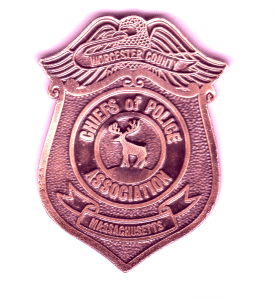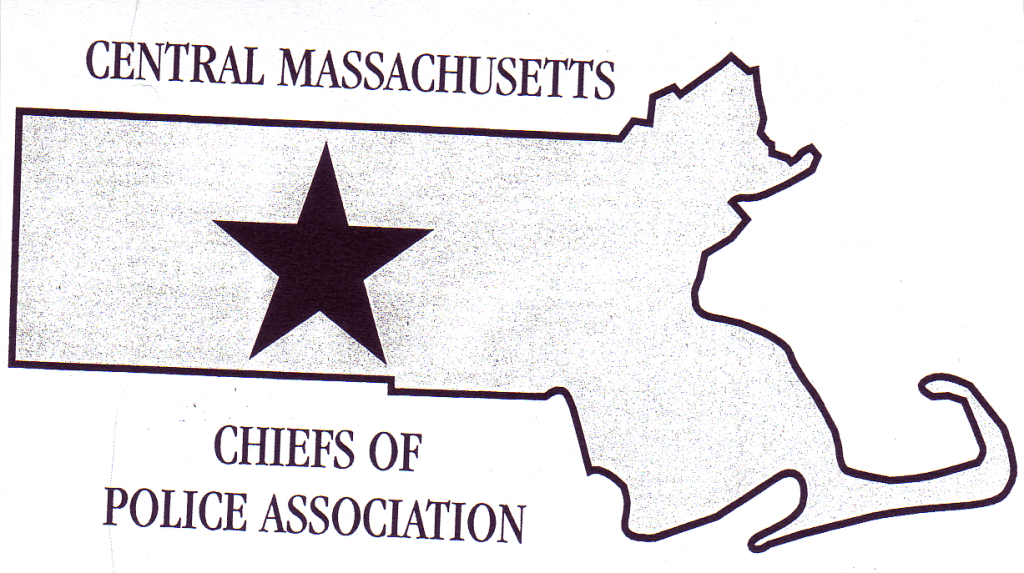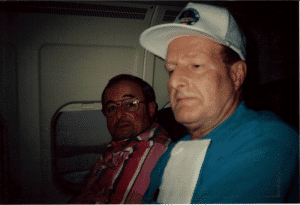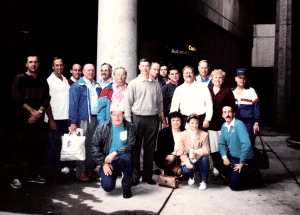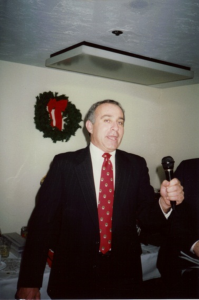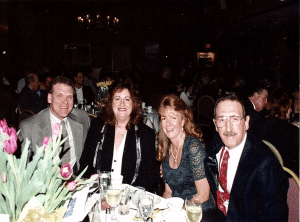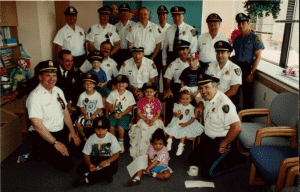Worcester County Chiefs of Police Association 1980-1994
Central Massachusetts Chiefs of Police Association 1994-Present
Written by:
Chief Michael R. Healy (Ret.)
October 2010
Preface
In the fall of 2009 during a monthly meeting of the Central Massachusetts Chiefs of Police Association I asked a question regarding some issue that occurred within the organization several years ago. To my surprise no one had the answer and it became obvious that our association did not have a very well documented history. I believe that history is an important part of our culture or any organization. Having knowledge of our origin of purpose and past practices strengthens any organization in determining its future. Because of this, I began researching and writing this article. For a year I have been in touch with many police chiefs both active and retired and had many opportunities to renew acquaintances with colleagues from my past. Without their help this document would not have been possible. I want to thank the following police chiefs for their time, patience, information, encouragement, old pictures and newspaper articles. Retired chiefs’ Robert McGinley of Shrewsbury, Robert Johnson of Auburn, Thomas Melia III of Northbridge, Robert Willhauck of Ashby, Charlie Reynolds of Holden, Robert Miller of Upton and Russell Messier of Grafton. I would also like to thank Chief Jim Hurley of Leicester, Chief Larry Barrett of Ashburnham, Chief Gerard Daigle of Bellingham, Chief Dennis Minnich of West Boylston and Attorney Jack Collins.
I hope you enjoy reading the history of our association as much as I enjoyed doing it. I have been a member of this organization since its inception and to me writing this was a labor of love.
I also want to thank my wife, Penny, who is my chief and best friend and who has always been there for me during the good times and bad. She keeps me focused. My thirty-six year career as a police officer, twenty-five as police chief, has truly been a shared career. In addition, she is responsible for assuring this article was spelled correctly and dedicated many hours of her own time proof reading every draft. Thank you and I love you.
Michael R. Healy
Chief of Police (Ret.)
The Beginning
In early 1979 several police chiefs within central Worcester County began discussing informally the possibility of forming a regional association. It should be noted that most of the chiefs considering the regional association already belonged to the larger State organization, the Massachusetts Chiefs of Police Association (MCOPA). However, during this period of time many police chiefs west of Natick/Framingham felt that the State association represented departments within the Route 128 belt more aggressively. This perception may or may not have been true but it set in motion the formation of several regional police chief associations. One of the first meetings to formally talk about the concept of a regional approach to law enforcement concerns and problems took place in 1979 at the diner on Route 140 now called Claudette’s 1921 Diner in Boylston. Although this cannot be construed to be the first Worcester County Police Chiefs Association meeting, it certainly was the first organized meeting to discuss the idea and its benefits. At this meeting set up by Chief David Werme of Boylston and Chief John Woods of Leicester were, Chief David Lindburg of West Boylston, Chief Michael Healy of the Worcester Housing Police, Chief James Carbery of Northborough, Chief Francis Reynolds of Shrewsbury, Chief Henry MacNamara of Grafton, Chief Robert Sheehan of Paxton and Chief Henry Wheeler of Berlin. When the meeting was over it was decided that the regional association was a good idea and further discussion should take place with a larger contingent of police chiefs from Worcester County. Each chief left with the understanding they would meet with the police chiefs in their neighboring communities and encourage them to participate. During the following months chiefs discussed the idea of regionalization with their neighboring chiefs and at the MCOPA monthly meetings. What started out as an idea was now a reality.
In the summer of 1980 Chief Henry “Hank” Bjorkland, the new West Boylston Police chief, had a cookout at his home in West Boylston. This cookout and pool party would become an annual summer event for the Worcester County Police Chiefs for several years to follow. The topic of discussion during this first cookout was to bring the concept of a Worcester County Police Chiefs Association to fruition. In essence, the meeting at Chief’ Bjorkland’s home in West Boylston was truly the first actual meeting of the Worcester County Chiefs of Police Association, although at the time it was not formally named or structured as such until several months later. It was agreed to have a meeting in the fall and the location was to be in Holden. The newly appointed Chief of Police for
Holden, Charlie Hicks, agreed to host the first structured meeting and took the bull by the horn in getting organization to the process. He talked extensively with Worcester County
District Attorney John Conte, Attorney Jack Collins, who was Council to the MCOPA, and several others to ensure the association was set up appropriately.
At the meeting held at the Holden Hills Country Club a vote was taken to name the organization the Worcester County Chiefs of Police Association (WCCOPA) and the structure of the organization was to consist of a President, First Vice President, Second Vice President, Secretary/Treasurer, Sergeant at Arms and a Board of Directors who would be elected to staggering terms. During that meeting Chief Hicks was selected as the first President. Chief Hicks held the office of President from the fall of 1980 until the fall of 1982 when the first nominations and elections took place. It was agreed that a committee would be assigned to draft by-laws for the organization and that membership would be open to any active police chief in Worcester County. During the next several months the structuring of the organization took shape, the Stag used as a symbol for Worcester County would be part of the logo, and it was the will of a majority of those charter members that active voting membership would only be open to municipal police chiefs. The Chief of Police for Worcester, who had several police agencies within its borders, went on to request that only one police chief from a community be eligible for voting membership. That policy remained in effect until the late 1980’s when the MCOPA, the parent organization representing police chiefs across the Commonwealth, changed their rules allowing non-municipal police chiefs to become active members. Within the next six months the structure of the WCCOPA was in place with traditional By-Laws, membership dues set at twenty-five dollars a year and establishment of committees to review and make recommendations on various topics that impacted law enforcement. The committees mirrored those in place with the MCOPA and traditionally chiefs sitting on a State committee or focus group tended to sit on the regional focus groups.
Included at the end of this report is a list of the past Presidents for the Worcester County Chiefs of Police Association later to be called the Central Massachusetts Chiefs of Police Association. The process for becoming President of the association meant first being elected as Sergeant at Arms and then moving upward each year to attain the Presidency. The first Secretary of the WCCOPA was Boylston Police Chief David Werme, who held that position from 1980 until 1984. The first treasurer for the WCCOPA was Mendon Chief of Police Kelsie Townsend who also held that position from 1980 until 1984. In 1984 it appears that the WCCOPA combined both the secretary and treasurer position into one. At that time Chief James Kearnan from Grafton was elected and took over and remained secretary/treasurer until 1989. In 1989, Shrewsbury Police Chief Robert McGinley assumed the Secretary/Treasurer position and remained as such through 1994.
During his tenure as Secretary/Treasurer the association approved Chief McGinley’s request to have a clerical staff member of his department assist him with those duties. Shirley Rischitelli, who was a clerical worker within the Shrewsbury Police Department, attended the monthly meetings, took notes and mailed out the monthly notices and minutes. Shirley was invited to almost all social functions. One has to remember this was before the computer generation and notices were sent via regular mail. Police chiefs were required to mail an enclosed post card back if they planned on attending the monthly meeting. Chief Jack Creighton of Uxbridge was elected Treasurer in 1994 following Chief McGinley’s request to step down. At Chief Creighton request he was only elected Treasurer and it was at this time the secretarial duties were assigned to the second Vice President. Chief Creighton remained Treasurer until 2000 when Millbury Chief Richard Handfield was elected Treasurer, a position he would hold for two years. In 2002, the association elected Ashby Chief Robert Willhauck (Ret.) as Treasurer and he remains in that position as the association enters its thirtieth anniversary.
From that first organization meeting in the fall of 1980 the Worcester County Chiefs of Police Association grew from about 25 active members to 66 active members in 1993. Membership consisted of police chiefs from Worcester County with one exception. The Bellingham Police Department, although in Norfolk County, was assigned to the Worcester County Court jurisdiction. Because of this Bellingham Chief Joseph Grassi became the first and only police chief outside of Worcester County to join the organization. However, the first by-laws made provisions for municipal police chiefs from outside Worcester County to be eligible for active membership, but only with a two-thirds vote at a regular business meeting. By 1993 active membership now included not only municipal police chiefs but area campus police chiefs. Another significant change to the Worcester County Chiefs of Police Association occurred in 1991. Although the make up of the organization was for representation and a voice for police chiefs in Worcester County it was apparent that there were police chiefs in communities who were involved in inter-department operations and training that did not fall within Worcester County. Some of these same police chiefs did not have a regional association that they could turn to. Therefore, in 1991, two police chiefs from Middlesex County joined the ranks of the Worcester County Chiefs of Police Association. In 1992 that number increased again with two more Middlesex chiefs joining the ranks.. Because the associations name indicated Worcester County several of these new member chiefs found it difficult to sell their dues membership costs to the Town fathers. Hence, in 1993 then President Chief Michael Healy from Hubbardston selected a group of four or five members to review the name of the association and get back to the full membership with some suggestions. Much discussion ensued regarding the importance of the Stag which was part of our logo at the time as well as the Worcester County Seal which we had copied. In January of 1994 the association voted to change both the name of the organization and the logo or lapel pin as we had know for the first 14 years. We would no longer be the Worcester County Chiefs of Police Association.
In the spring of 1994 newly appointed President Chief Peter Roddy of Leominster would take the helm of the Central Massachusetts Chief’s of Police Association and the County Stag would be replaced with the present logo with the outline of the Commonwealth of Massachusetts with a star in the center. The organization that started with twenty-five active Worcester County police chiefs has grown to include 71 active, 28 associate, 19 life and 5 honorary members for a total membership of 123 in 2010.
Our Law Enforcement Mission
The WCCOPA came into fruition with the realization that our primary mission would be to address issues, concerns and problems facing police chiefs within Worcester County and identify solutions.
Recognizing at the onset that coordination and cooperation with all agencies within the County were essential to achieve success the original by-laws of the Worcester County Chiefs of police Association stated under Article II Purpose: The purpose of the organization is to provide the heads of police organizations throughout Worcester County Massachusetts with a means of meeting as a group to promote the development of effective law enforcement in Worcester county.
Furthermore, it is the purpose of this organization to develop and foster harmonious relations with all public and private agencies and organizations concerned with law enforcement in Worcester county.
Even before the establishment of the WCCOPA there were several very important concerns that police administrators were faced with across Worcester County. To better address these issues police chiefs were asked to prioritize issues they wanted the new organization to address. Five of those issues that immediately came to mind include: regional lock-ups, drug labs more centrally located, In-service training for police officers, improved working relations with then District Attorney John Conte and Mutual Aid agreements.
The need for a regional lock-up was most prevalent with many of the departments within the County because they either had no facility or relied on larger departments to hold prisoners and those departments were beginning to deny the service. Other departments were having problems getting their cell facilities certified or did not have personnel on duty in the station to watch prisoners. Further, transporting prisoners out of town meant a community would not have police coverage for extended periods of time. A committee was established to see if a regional lock-up system could be developed with the help of then Worcester County Sheriff Mike Flynn. For thirty years this problem has remained in the forefront without any real solution.
Another pressing problem facing police chiefs in Worcester County was the lack of a convenient location to take confiscated drugs for testing. Back then the only option available was the lab on Washington Street in downtown Boston, and the only time you could get in there was at night because of the parking issue and their hours. It wasn’t until the early 1980’s that a lab was opened in Amherst at the U-Mass campus. However, this was still quite a trip for many agencies in both the north and south parts of the County. It wasn’t until the mid 1990’s and only through a strong push from the CMCOPA that a lab was finally opened in Worcester.
Back in 1980 in-service training for officers was really unheard of and not readily available to many small departments. Through the efforts of the WCCOPA working with Gary Eagan, then Executive Director of the Massachusetts Criminal Justice Training Council, Chief William Baker of Sutton in 1990 agreed to provide an in-service training program within the Sutton Police Department. This was in the wake of the Los Angeles Rodney King incident and police training was on the front burner. In 1992 Chief Baker left Sutton to become the Executive Director of the Massachusetts Criminal Justice Training Council, replacing Mr. Eagan who had been indicted. It was then that Chief Annis, who had replaced Chief Baker in Sutton, chose not to have the in-service training at his department. Through the efforts of Chief Baker at the MCJTC, Public Safety Commissioner Tom Engel of Gardner and the WCCOPA the in-service training was relocated to Gardner Community College under the direction of Howard Lebowitz and became one of the more active training facilities in the Commonwealth. It remained there until moving to the old Digital Equipment building in Boylston where it remains today. In January 1995 Governor William Weld appointed Chief Baker Commissioner of Public Safety.
Although District Attorney John Conte always had a representative of his at the monthly meetings many felt this was just lip service. Communications between local law enforcement agencies and the District Attorney was sometimes strained, usually limited and the only time he made himself visible was at election time. Only until the retirement of Mr. Conte and the election of District Attorney Early did the communications and interaction improve.
Mutual Aid agreements between departments were sporadic at best and those communities that did have them on many occasions found them either outdated or unsigned by the Selectmen or City Council. Efforts to improve these agreements were difficult and sometimes impossible. It has only been in recent years with the influx of regionalization and shared law enforcement tasks and programs as well as the law enforcement council that up to date agreements are in place.
Our First Challenge
1994 proved to be one of the worst years for the WCCOPA. First, on February 1, 1994 Paxton Police Chief Robert J. Mortell while responding to assist the Holden Police Department with a B&E he was fatally shot. Less than six months later on July 23, 1994 Barre Police Chief Michael Ryder died from a self inflicted gunshot wound. Both men were good community police chiefs and their deaths not only impacted our association with the loss of close friends and colleagues but influenced the way we did business as an association.
In 1994, we did not have enough money in our treasury to contribute anything to the families of either officer. We could barely pay for flowers. Since those tragedies in 1994 the new CMCOPA took seriously the necessity to have a viable treasury and raise money. Chief Thomas Melia from Northbridge brought the idea of having a golf tournament to raise money for our association. That year he and a small committee consisting of Chief Messier from Grafton, Chief Colleary from Southborough and Chief Creighton from Uxbridge put together a tournament that was successful and brought much needed revenue into the CMCOPA.
That first tournament was held on June 28, 1995 in Charlton and has continued to be held the third Wednesday of June. That tournament continues every year and this year the CMCOPA held their 15th Annual golf tournament.
Also, in late 1994 Chief Robert McGinley stepped down as Secretary/Treasurer a position he held for about six years. When Chief McGinley stepped down as Secretary/Treasurer for the association Chief John Creighton from Uxbridge took over as Treasurer. However, as mentioned previously Chief Creighton only wanted to handle the Treasurer duties and did not want the responsibilities of the Secretary. It was during the election of officers for 1995 that the position of Secretary was eliminated and the 2nd vice President assumed the responsibility of taking notes at the meetings and disseminating minutes and meeting notices. A practice that continues today.
When Chief Creighton took over the responsibility of Treasurer he vowed that the CMCOPA would never be financially unable to assist the family of a fallen chief again. He pledged to increase the association’s coffers. A task he was very successful at achieving.
The Social Side of the Organization
The purpose for regionalization was better representation at the State level, a voice in Boston that characterize the needs of central Massachusetts and a mechanism to address similar concerns within the County. However, we could not forget the need for regional socialization. This was evident at the first meeting to discuss the idea of an association in the first place. We planned establishing the WCCOPA while having cocktails at a pool party cookout at Chief Bjorkland’s home in West Boylston. That tradition continued for years. The pool party cookout continued at Chief Bjorkland’s home even after he retired
The last cookout at Chief Bjorkland’s house was in 1986. In 1987 the annual summer pool cookout was in Northborough at Chief Healy’s home. It continued there each summer until 1992 when it moved to Attorney Jack Collins home in Shrewsbury. Attorney Collins and his wife continued to host the cookouts until 1998.
In 1999, the summer cookout changed from the traditional steak, hamburger and hot dog on a grill to a catered event which included lobster and moved to Shrewsbury at the Donahue Rowing Center on Lake Quinsigamond. This continued until 2005 when the lobster cookout went to Mount Wachusett where it remained until 2008. In 2009, the summer picnic moved to Westminster Village in Westminster.

In addition to the annual cookout every year the association began having Christmas parties in 1987. The first Christmas party was held in Shrewsbury at the Ground Round next to Spags. Bob Bonin, the owner of the Ground Round and an Associate member of the WCCOPA, was a most congenial host. Entertainment consisted of a person playing an electric keyboard who sang. We held the parties at the Ground Round in 1987, 1988 and 1989. These were very quiet parties with a cash bar and were usually over by 9:30PM. In 1990, the Christmas party moved to JJ O’Rourke’s in Northborough, now known as JJ’s Sports Bar, next to the 9 and 20 Motel. This is when the parties took on a livelier role with Karaoke.
It was in 1990 that Hubbardston Chief Healy approached Clay Chase President of AMI, now called MHQ, to ascertain if AMI would be willing to support the Christmas party, to which Mr. Chase agreed. AMI also purchased 10 tickets to the party and every year since they have been well represented. To this day MHQ continues the tradition of supporting the annual CMCOPA Christmas party. The Christmas party remained in Northborough at JJ O’Rourke’s from 1990 to 1992 with karaoke and a DJ for entertainment.
When the chiefs left the party in 1992 they were greeted with almost a foot of fresh fallen snow which made their ride home more challenging.
In 1993, Shrewsbury Chief McGinley’s wife Nancy requested that we have the party at McQuales, now Vinny T’s, in Shrewsbury. Nancy took charge that year of the Christmas party, which included karaoke, and it was one of our largest turnouts.
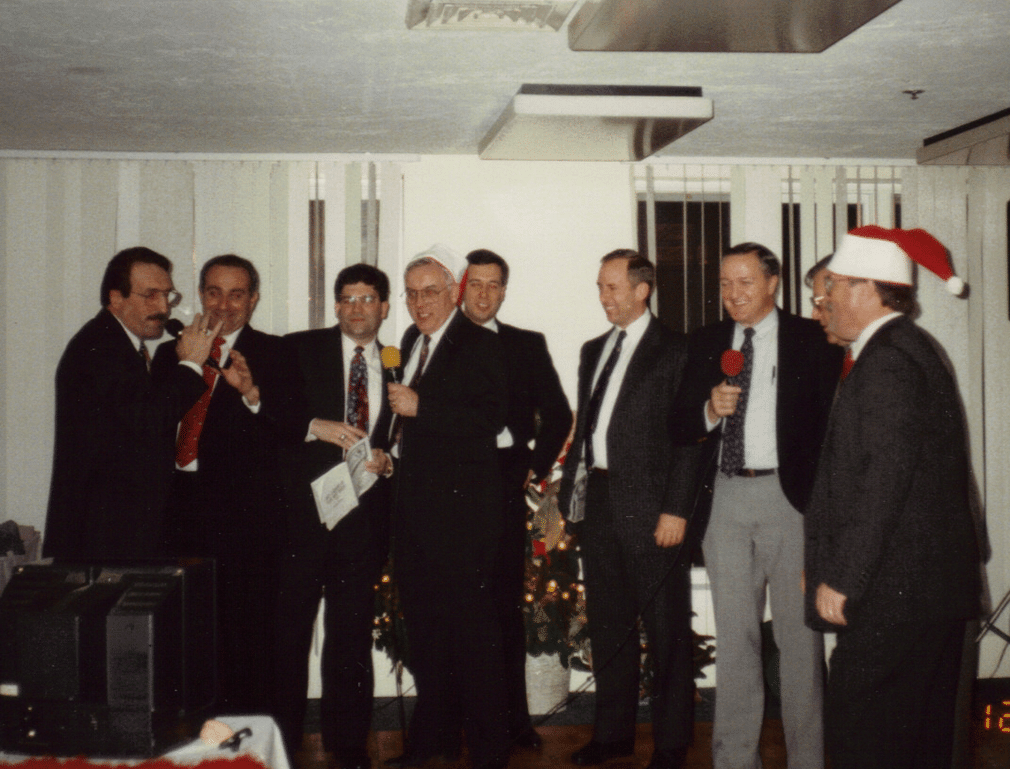
In 1994, Chief Roddy from Leominster and President of the association moved the party to Chappy’s in Leominster. Then in 1995 through 2003 the party moved to the Knights of Columbus hall in Westborough where the entertainment changed from Karaoke to a DJ and the menu was a prime rib buffet. In 2004, then President Roy Melnick chose the Morgan Center in Ashland for the party and the tone seemed to becoming quieter. In 2005, Pleasant Valley Country Club became the choice for the Christmas party with a sit down dinner and has been held there since. The first year at Pleasant Valley we were placed in the lower level dining area which was very cramped. Since 2006 the party has been held in the main function room on the upper level and in recent years we have been entertained by a great band with excellent singers.

Active Members Lost
Since the inception of the Worcester County Chiefs of Police Association thirty years ago several police chiefs passed away while active members of the association. They included Chief John Wood from Leicester, one of the founding organizers of the association, who was killed in a motorcycle accident in June 1983. Chief James Wagner of Hubbardston passed away in 1986 from cancer. Chief George “Tanker” Brady from Millbury died in August 1988 and was also a charter member of the Worcester County Chiefs Association. Chief Robert Mortell from Paxton was shot to death responding to a burglary on February 1, 1994. Additionally, in 1994 on July 23rd Chief of Police Michael Ryder from Barre succumbed to a self inflicted gunshot wound. In March of 2000 Bellingham Police Chief Richard Boucher passed away from ALS (Lou Gehrig’s disease). Chief Boucher in 1985 was the second police chief to join the WCCOPA from a municipality not within Worcester County. Southborough Police Chief William Webber passed away in November 2008 from cancer. I would be remiss if I did not include Chief William Colleary from Southborough on this list. Although Chief Colleary had recently retired when he succumbed to cancer, his retirement was because of the cancer. I remember Chief Colleary’s appointment as chief in 1992 and from that day on he was an active and involved member of this association who kept us all in good spirits.
Jimmy Fund Involvement
The Dana Farber Cancer Institute through the Jimmy Fund has long been the only charity that the Massachusetts Chiefs of Police Association has been involved with. Although it wasn’t until 1953 when the Jimmy Fund became the official charity of the Massachusetts Chiefs this relationship goes back to 1948 when Chief Pelletier from Cohasset gave a young cancer patient his badge to prove he was actually a police chief. So it should not be any surprise that the WCCOPA continued with this tradition.
In 1984 Auburn Police Chief Bob Johnson listened to Mike Andrews at a MCOPA meeting complain about the decline of support from local police chiefs. Chief Johnson at the time was an active runner so after that meeting he proposed to several other chiefs the idea to have a relay style run from New York to Boston to raise money. Those chiefs thought this was a great idea so along with Bob during that summer they encouraged police chiefs from across the Commonwealth to join them in September for the first Run for Jimmy. This event, the idea of one of WCCOPA members, was a very successful mechanism for local police chiefs to solicit money from their community for the Jimmy Fund by running relay style from Hancock on the New York border to Boston.
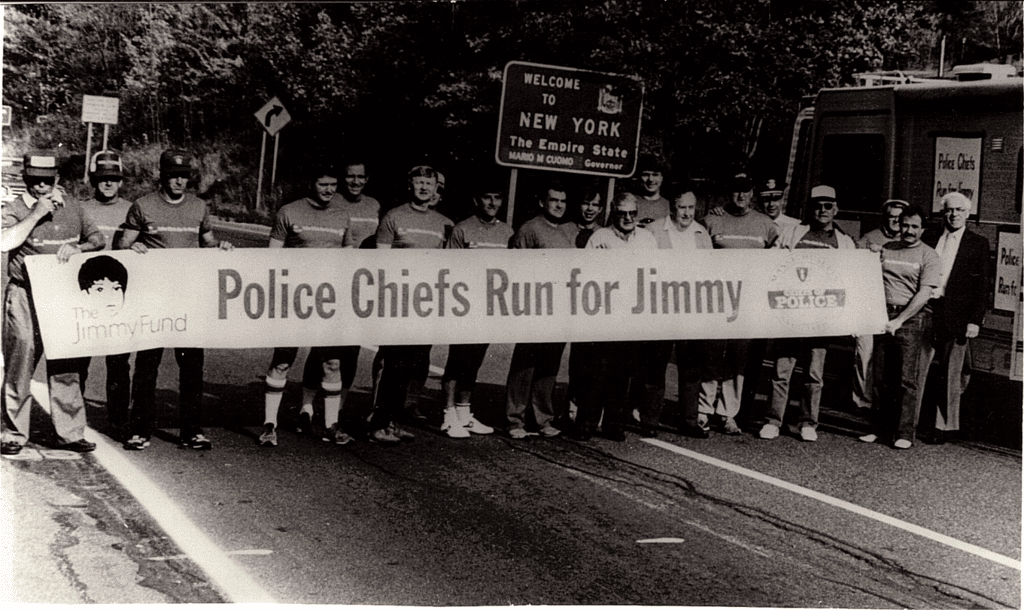
Worcester County chiefs became one of the largest contingents represented in this annual event. That first year the chiefs drove out to Pittsfield on Friday afternoon in a class C RV and a van and slept in the RV Friday night. Saturday morning they began running to Boston and ran through the night arriving early Sunday morning in Webster Square in Worcester where they rested for a couple hours before continuing to Boston. That was September 1984 and those runners raised a total of $35,000 for the Jimmy Fund.
The following year the goal of the runners was $100,000 and instead of stopping at Dana Farber the police chiefs continued on to Fenway Park where they ran onto the field carrying the “Police Chiefs Run for Jimmy” banner wearing the Run for Jimmy shirts. There they were greeted by well-known sportscaster and the “voice of the Red Sox” Ken Coleman where Auburn Chief Bob Johnson addressed the packed Fenway Park. In 1994 the annual Jimmy Fund Run was renamed the Robert Mortell Run for Jimmy in remembrance for Paxton Police Chief Bob Mortell who was killed in February of that year.
During the peak years of the Run for Jimmy, from 1987 through 1995, approximately twenty-five chiefs from across the Commonwealth would annually take a chartered bus on Friday afternoon to the Town of Hancock where they would stay overnight at the local motel.
At six in the morning the run would begin on the New York border with the police chiefs from western Massachusetts taking the first couple of hours of running through the hills. They didn’t get any complaints from the guys from eastern Massachusetts who were still half asleep on the bus.

During the weekend other chiefs would join in the run either within their jurisdiction or by boarding the bus on Saturday or Sunday. Saturday night the group stayed overnight in Sturbridge and did so each year until the mid 1990’s when they stayed at the MSP Academy in New Braintree. From 1990 until 1994 Chief Healy from Hubbardston made arrangements with New Balance who provided sneakers for all the runners. In 1989, the Dana Farber held their first Walk for Jimmy which took the route of the Boston Marathon beginning in Hopkinton. From 1989 until the end of the Massachusetts Chief’s Robert Mortell Run for Jimmy in 2004 runners joined with the walkers at Dana Farber in Boston on Sunday afternoon and they all continued on to Copley Square. The Run for Jimmy lasted twenty years. Since the end of the Robert Mortell Run for Jimmy in 2004 the police chiefs continue their support of the Jimmy Fund by participating in the annual September Walk for Jimmy.
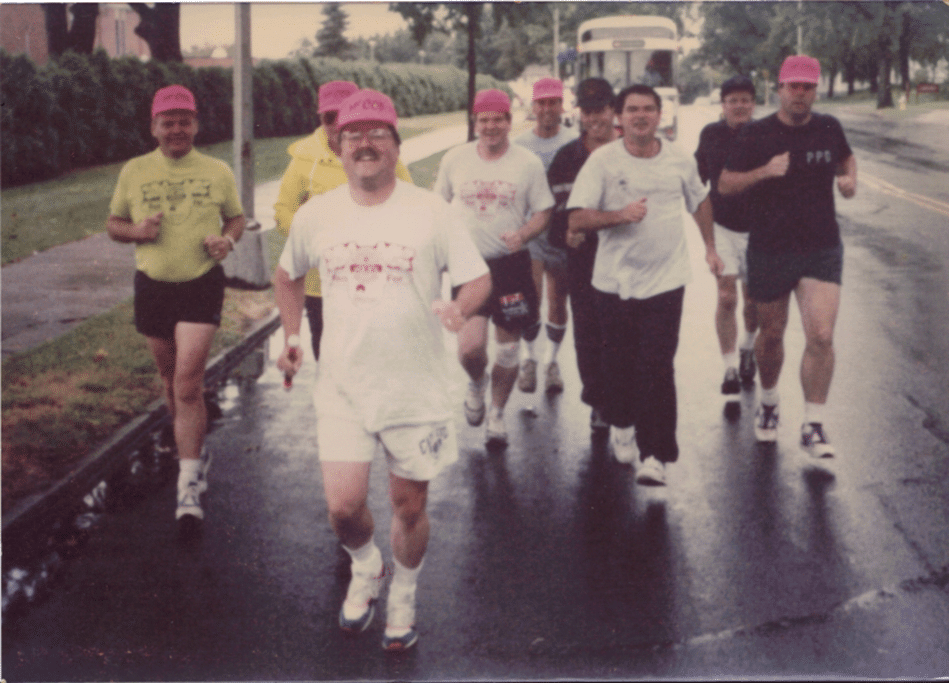
Beginning in 1988 the WCCOPA started including a raffle at the monthly meetings. The first items raffled were signed baseballs from Roger Clemens, Butch Hobson and Rich Gedman and the money collected was sent to the Jimmy Fund. That tradition continues today. In the early years the WCCOPA was able to send small contributions to the Jimmy Fund. Today those contributions have increased significantly with the total for 2009 at $8,500. Since 2002 the CMCOPA has contributed over $38,000 to the Jimmy Fund through their raffles and golf tournament.
Standing Chiefs Burke, Hebert, Ryan, Melia and Thibodeau
Kneeling Chiefs Bourgeois, Foley and Willhauck
In recent years the Central Massachusetts Chiefs have continued their fight against cancer by participating in one of the biggest Jimmy Fund financial resources, the Pan Mass Challenge where they ride their bicycle from Sturbridge to Provincetown.
Accomplishments
When the WCCOPA first began the goal was to assure a strong presence of administrative support for each other and a voice for law enforcement executives within the County. To accomplish public recognition we needed a mechanism to get our message out. One resource we had in our corner was a reporter from the Worcester Telegram and Gazette named Rosco Blunt. Mr. Blunt frequently attended our meetings and was quick to write positive articles about activity or issues we were dealing with. In 1995, Chief Johnson from Auburn headed up a law enforcement career awareness show at the Worcester Centrum. Many chiefs from Worcester County participated in the event which proved successful, but unfortunately because of the costs associated with it the program was not held again.
In December 1993 the Board of Selectmen in the Town of Hubbardston notified their Police Chief Michael Healy that they would not be renewing his contract when it came up on October 1, 1994. This was not an uncommon occurrence then nor is it today. However, today because of legislation initiated by a member of the WCCOPA non-renewal of a police chief’s contract or failure to reappoint requires a one year notification. Back in 1994 when Chief Robert Miller of Upton learned of the Hubbardston Selectmen decision he was outraged. Chief Miller, a very active member of the CMCOPA who would become its President in 1995, took it upon himself to work with his State Representative Marie Parente, who filed legislation mandating one year notification of police officers not being reappointed or terminated without cause. Because of Chief Miller’s efforts and the MCOPA Representative Parente’s legislation passed and is in place today. Chief Miller also working with Representative Parente and the MCOPA was instrumental in legislation which allowed military buy back for police officers.
In October 2009 past President of the CMCOPA Chief Patrick T. Foley of Douglas, was elected Vice-President at Large of the International Association of Chiefs of Police (IACP) during their 116th Annual Conference held in Denver, Colorado.
To this day Central Massachusetts police chiefs are living up to the visions and traditions established by those chartered members of the Worcester County Chiefs of Police Association set back in 1980 when they stated the purpose and mission of this body was to provide the heads of police organizations throughout Worcester County Massachusetts with a means of meeting as a group to promote the development of effective law enforcement in Worcester county. Furthermore, it is the purpose of this organization to develop and foster harmonious relations with all public and private agencies and organizations concerned with law enforcement in Worcester County. They are doing this today beyond the borders of Worcester County.

